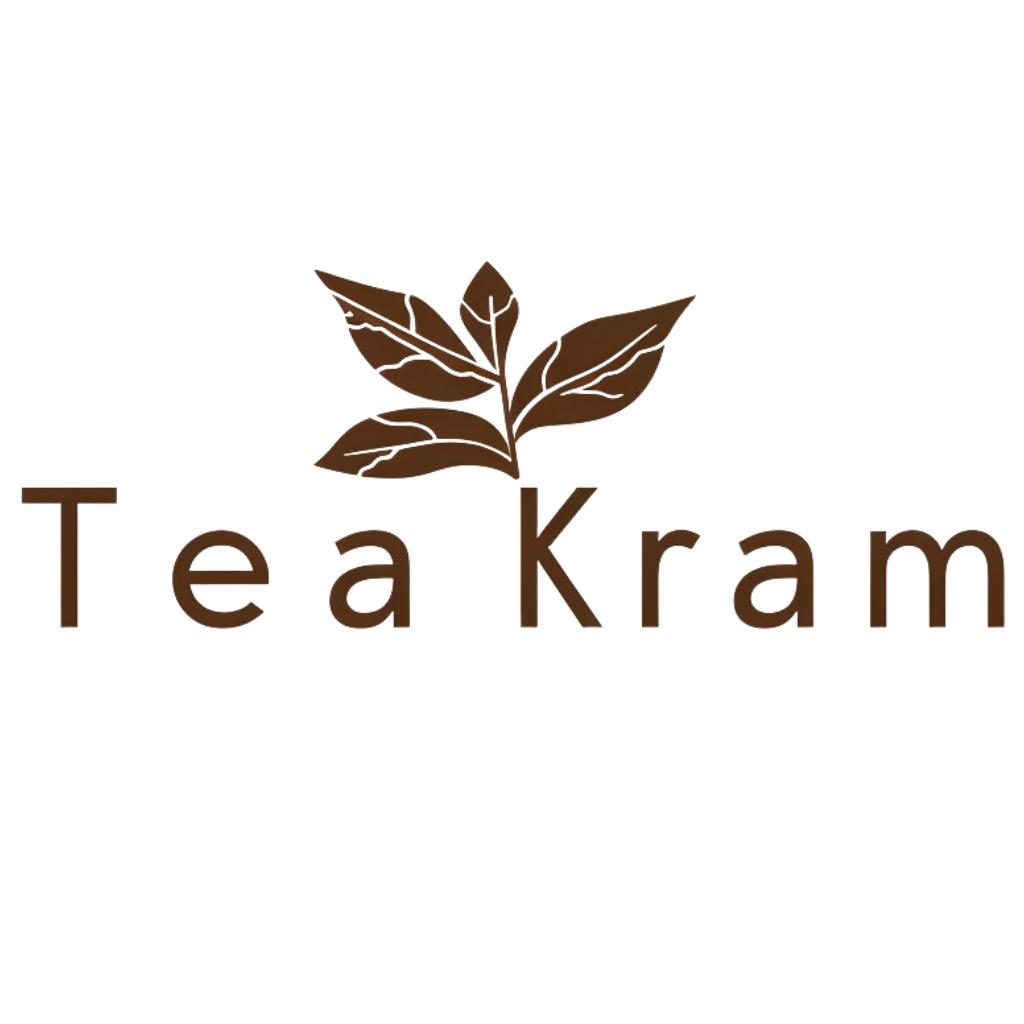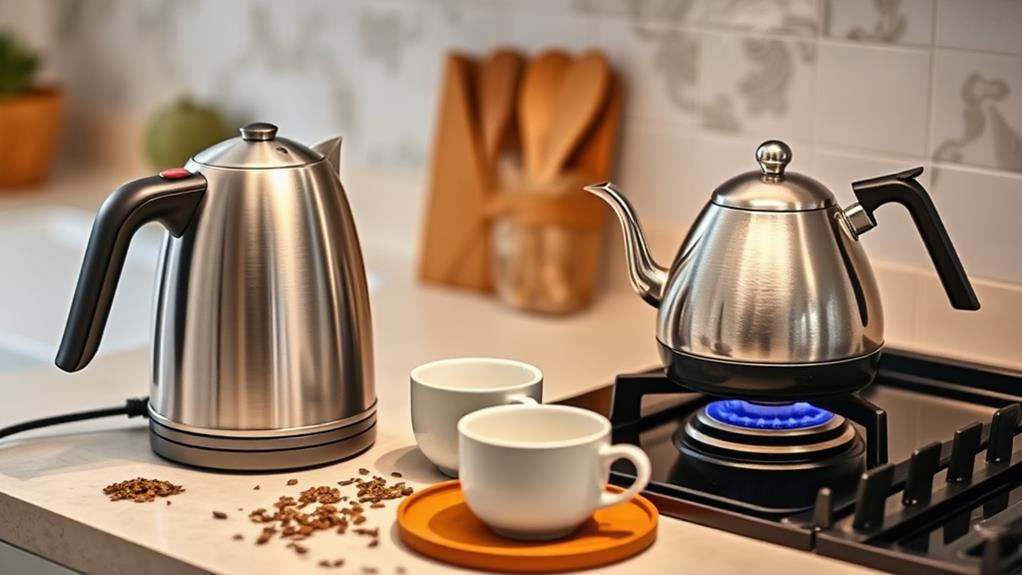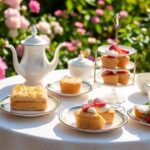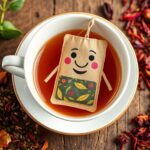When picking between electric and stovetop tea kettles, you've got some great choices! Electric kettles boil water faster, usually in just 3-5 minutes, and many come with temperature controls for perfect tea brewing. They're also energy-efficient and safe, thanks to features like auto shut-off. On the other hand, stovetop kettles have a charming, classic feel. They work without electricity, making them perfect for camping or during power outages. Both types have their unique values, so think about your needs and preferences. If you stay with us, you'll uncover even more tips to get the most out of your tea kettle!
Overview of Electric Kettles
Electric kettles have revolutionized the way we boil water, combining speed and convenience in a sleek design. These innovative appliances heat water faster than traditional methods, saving you precious time during busy mornings or when hosting friends.
With just the push of a button, you can have boiling water ready for tea, coffee, or instant soups in no time.
Many electric kettles come equipped with advanced features, like temperature control and automatic shut-off. This means you can choose the perfect temperature for delicate teas, ensuring you get the best flavor without a bitter aftertaste.
Plus, the automatic shut-off feature adds an extra layer of safety, so you won't have to worry about boiling dry.
Another fantastic aspect is their energy efficiency. Electric kettles require less energy than stovetops, making them a greener choice for your kitchen.
They're often designed with stylish finishes and compact sizes, fitting seamlessly into any decor.
In short, if you're looking for an efficient, safe, and stylish way to boil water, an electric kettle is the way to go. They make your life easier while adding a touch of modern flair to your kitchen routine!
Overview of Stove Top Kettles
Boiling water with a stove top kettle brings a classic charm to your kitchen routine. These kettles offer a delightful blend of tradition and functionality, making them a stylish addition to any cooking space. You'll find them in various materials, like stainless steel or enamel, each bringing its own unique flair.
Using a stove top kettle is simple. Just fill it with water, place it on the burner, and let the heat do the work. One of the coolest features is the whistle that alerts you when the water's boiling. It's like having a little assistant in your kitchen!
Stove top kettles are also versatile. You can use them on gas, electric, or even induction cooktops. Plus, they don't rely on electricity, making them great for camping trips or during power outages.
While innovation often focuses on speed, there's something satisfying about watching water heat up in a kettle. It gives you a moment to pause and enjoy the process.
Speed and Efficiency Comparison
When you think about making a quick cup of tea, speed and efficiency really matter.
Electric kettles usually heat water faster than stove tops, which can save you precious time during busy mornings.
Plus, it's interesting to reflect on how much energy each option uses, as that can affect both your wallet and the environment!
Heating Time Analysis
Although both electric and stove top tea kettles have their merits, the time it takes to heat water can greatly influence your choice. If you're in a hurry or just can't wait for your tea, electric kettles often come out on top. They typically heat water in just a few minutes, thanks to their powerful heating elements that focus energy directly into the water. You could be sipping your favorite brew in no time!
On the other hand, stove top kettles can take longer, especially if you're using a traditional gas or electric burner. The surrounding air and the kettle's material absorb some of that heat, slowing down the process.
However, many find the experience of using a stove top kettle charming and worthwhile, enjoying the gentle whistle that signals their water is ready.
Ultimately, if speed is your main concern, electric kettles are your best bet. But if you appreciate the art of boiling water and don't mind the wait, a stove top kettle can be a delightful addition to your kitchen. Choosing the right kettle comes down to your personal preferences and lifestyle.
Energy Consumption Differences
In the domain of energy consumption, electric kettles generally outshine their stove top counterparts. When you boil water for your tea, it's crucial to take into account how much energy each type uses. Electric kettles heat water faster and usually more efficiently, making them a smart choice for the innovation-minded tea enthusiast.
Here's a quick comparison to illustrate the differences:
| Kettle Type | Average Energy Consumption |
|---|---|
| Electric Kettle | 1500-3000 watts |
| Stove Top Kettle | 1000-2000 watts |
| Time to Boil (1L) | 3-5 minutes |
| Efficiency | ~80-90% |
Electric kettles convert most of their energy into heat, wasting little. In contrast, stove tops lose heat to the surrounding air, making them less efficient. If you're in a hurry or just want to save on your energy bill, an electric kettle is your best friend. Plus, many models come with features like temperature settings and automatic shut-off, adding to their appeal. So, when it comes to energy consumption, electric kettles are the way to go!
Temperature Control Features
Considering the variety of teas available, temperature control features in kettles play an essential role in brewing the perfect cup. Different teas thrive at different temperatures; for instance, green tea does best around 175°F, while black tea needs about 200°F. Additionally, precise temperature control can enhance flavor extraction, allowing you to enjoy each tea's unique profile and aroma ideal brewing temperatures.
So, wouldn't it be great to have a kettle that knows just what you need?
Electric kettles often come equipped with precise temperature settings, allowing you to choose the exact heat for your brew. With just a press of a button, you can set your kettle to the ideal temperature, making it easy to switch between types of tea without guessing. Some models even have built-in thermometers that display the current temperature, so you can monitor it closely.
Stovetop kettles, while classic, typically lack this level of control. You might find yourself playing the waiting game, hoping you've hit the right temp.
If you're passionate about tea and want to elevate your brewing game, investing in a kettle with advanced temperature control features can transform your experience. Imagine brewing each tea to perfection, delighting your taste buds with every sip! That's the power of precise temperature control.
Design and Aesthetics
When it comes to tea kettles, design and aesthetics play a significant role in your kitchen's overall look and feel. An eye-catching kettle can elevate your space, making it not just functional but also a style statement. Electric kettles often feature sleek, modern designs that can enhance your countertop, while stove-top kettles offer a classic charm that many love.
Here's a quick comparison of design features you might consider:
| Feature | Electric Kettles |
|---|---|
| Material | Stainless steel, glass |
| Color Options | Vibrant, trendy colors |
| Shape | Sleek, compact designs |
| Control Panel | Digital, intuitive displays |
| Feature | Stove-Top Kettles |
| Material | Enamel, copper |
| Color Options | Traditional, vintage hues |
| Shape | Curvy, classic silhouettes |
| Whistle Sound | Nostalgic, charming tones |
Choosing the right kettle isn't just about boiling water; it's about how it fits in your home. So, whether you prefer the modern flair of electric kettles or the vintage vibe of stove-top models, you can find one that resonates with your style!
Energy Consumption Insights
Choosing a kettle also involves understanding its energy efficiency and consumption. When you think about electric versus stove-top kettles, energy use can vary greatly. Electric kettles usually boil water faster, thanks to their powerful heating elements. This means they often use less energy overall, especially if you're in a rush. You'll appreciate this when you're craving that cup of tea!
Additionally, using the correct water temperature for your selected tea type can enhance your brewing experience while conserving energy, as mastering steeping time guarantees you get the best flavor without wasting resources.
On the other hand, stove-top kettles rely on your stovetop's efficiency. If you have a gas stove, you might find it uses more energy than an electric kettle since gas flames can waste heat. If you're using an electric stove, keep in mind that it may take longer to heat up, which can lead to higher energy consumption.
Plus, many modern electric kettles come with energy-saving features like temperature control settings or automatic shut-off. These innovations not only save energy but also give you a more precise brewing experience.
Safety Features and Concerns
When choosing a tea kettle, safety features are super important to contemplate.
You'll want to look for options like boil dry protection, which prevents the kettle from heating when there's no water, and an auto shut-off feature that turns it off once the water's boiled.
Plus, kettles made from heat-resistant materials can help keep you safe from burns while you enjoy your favorite brew!
Boil Dry Protection
Boil dry protection is an essential safety feature that can save you from potential kitchen disasters. Imagine starting your day with a kettle that automatically prevents overheating when there's no water inside. This innovative feature is designed to detect low or no water levels and immediately shut off the kettle.
It's a smart way to avoid burnt elements and the risk of fire, giving you peace of mind while you multitask in the kitchen.
When you're busy or distracted, it's easy to forget about your kettle. With boil dry protection, you won't have to worry about leaving it on. The technology kicks in quickly, ensuring that your kettle is safe even if you lose track of time.
This means you can focus on brewing your favorite tea or preparing breakfast without anxiety.
In a world where safety and efficiency are paramount, boil dry protection stands out as a crucial feature. It combines innovation with practicality, transforming your kettle into a reliable kitchen companion.
Auto Shut-Off Feature
Alongside boil dry protection, the auto shut-off feature is another essential safety mechanism in modern kettles. This innovative technology automatically turns off your kettle once the water reaches a boiling point.
Imagine this: you're multitasking in the kitchen, and you accidentally forget about the kettle. With the auto shut-off, there's no need to worry. Your kettle will take care of itself, preventing overheating and potential hazards.
This feature isn't just about safety; it also enhances energy efficiency. When the kettle shuts off on its own, you're saving energy without any extra effort. Plus, you won't have to waste time waiting for your kettle to cool down before you can safely handle it.
Many electric kettles also come with additional indicators, like a light that signals when the kettle is on or off. This way, you'll have peace of mind, knowing at a glance whether your kettle is still boiling away or has already switched off.
In a world where convenience meets safety, the auto shut-off feature stands out as a brilliant innovation, making your tea-making experience smoother and more enjoyable.
Heat Resistant Materials
Many modern kettles are designed with heat-resistant materials that guarantee safety and durability during use. These materials, such as stainless steel, silicone, and certain ceramics, help protect you from burns while ensuring the kettle itself lasts through years of boiling water.
Imagine having a kettle that not only heats your water efficiently but also keeps the exterior cool to the touch. That's the kind of innovation you deserve!
When you choose a kettle made from heat-resistant materials, you're investing in your safety. For instance, stainless steel kettles are often double-walled, providing insulation that minimizes heat transfer to the outer surface. Additionally, silicone handles and grips prevent slipping and burning your hands.
However, it's crucial to evaluate the quality of these materials. Cheaper alternatives may not withstand high temperatures as well, leading to potential safety concerns.
Always look for kettles that meet safety standards, ensuring peace of mind while you enjoy your favorite hot beverages.
Price Range and Value
When it comes to price range and value, tea kettles can vary considerably based on their type and features. If you're looking for an electric kettle, you might find options starting around $20, with high-tech models climbing up to $200 or more.
These innovative kettles often come with temperature controls, quick boiling times, and even built-in infusers, making them a great investment for tea enthusiasts who appreciate the health benefits of tea.
On the other hand, stove top kettles typically range from $15 to $100. While they might lack some high-tech features, they often boast timeless designs and durability.
Plus, there's something charming about watching the kettle whistle on the stove, isn't there?
When weighing your options, consider what you value most. Do you want speed and efficiency, or do you prefer a classic experience?
Look for materials that promise longevity, like stainless steel or ceramic, as they offer great value in the long run.
Best Use Cases for Each
Choosing the right kettle often boils down to how you plan to use it. If you're looking for speed and convenience, an electric kettle is your best bet. It heats water quickly and often has temperature settings for different types of tea. On the other hand, a stove top kettle offers a classic touch, perfect for those who enjoy the ritual of boiling water over flame.
Here's a quick comparison to help you decide:
| Kettle Type | Best Use Case |
|---|---|
| Electric Kettle | Ideal for quick teas, instant noodles, or coffee. |
| Stove Top Kettle | Great for slow, traditional tea brewing or camping. |
If you're in a hurry, the electric kettle can save you precious minutes. However, if you love the ambiance of a stovetop kettle whistling in your kitchen, you'll appreciate the charm it brings. Plus, it's perfect for those cozy evenings when you want to unwind. Ultimately, your choice hinges on your daily routine and personal preferences, making both options innovative in their own right!
FAQ
Can I Use an Electric Kettle for Boiling Other Liquids?
Yes, you can use an electric kettle for boiling other liquids, but be cautious. Some ingredients might leave residues or affect the kettle's heating elements. Always check the manufacturer's guidelines for ideal use and safety.
What Materials Are Commonly Used in Stove Top Kettles?
Did you know that 70% of consumers prefer stainless steel for its durability? When choosing stove top kettles, you'll often find stainless steel, copper, and enameled cast iron, each offering unique benefits for your kitchen experience.
Are Electric Kettles Noisy When Boiling Water?
Yes, electric kettles can be a bit noisy when boiling water. However, their efficiency and speed often outweigh that minor disruption. You'll appreciate the quick results, making your daily routines smoother and more enjoyable.
How Long Do Electric Kettles Typically Last?
Electric kettles typically last around 5 to 10 years, depending on usage and brand quality. With proper care, you can maximize their lifespan, ensuring you enjoy quick boiling for years to come without hassle.
Can I Find Eco-Friendly Options for Both Kettle Types?
Absolutely, you can find eco-friendly options for both kettle types. Look for kettles made from sustainable materials, energy-efficient designs, or those with recyclable packaging. Research brands committed to environmental responsibility to make a positive impact.
Final Thoughts
In the end, choosing between an electric kettle and a stove top kettle really depends on your needs and preferences. Picture the instant buzz of an electric kettle, boiling water faster than you can say "tea time." Or imagine the cozy charm of a stove top kettle, gently whistling on the stove as it warms your kitchen. Whether you crave speed, control, or aesthetics, both types have their perks. So, which kettle will you invite to your kitchen?



